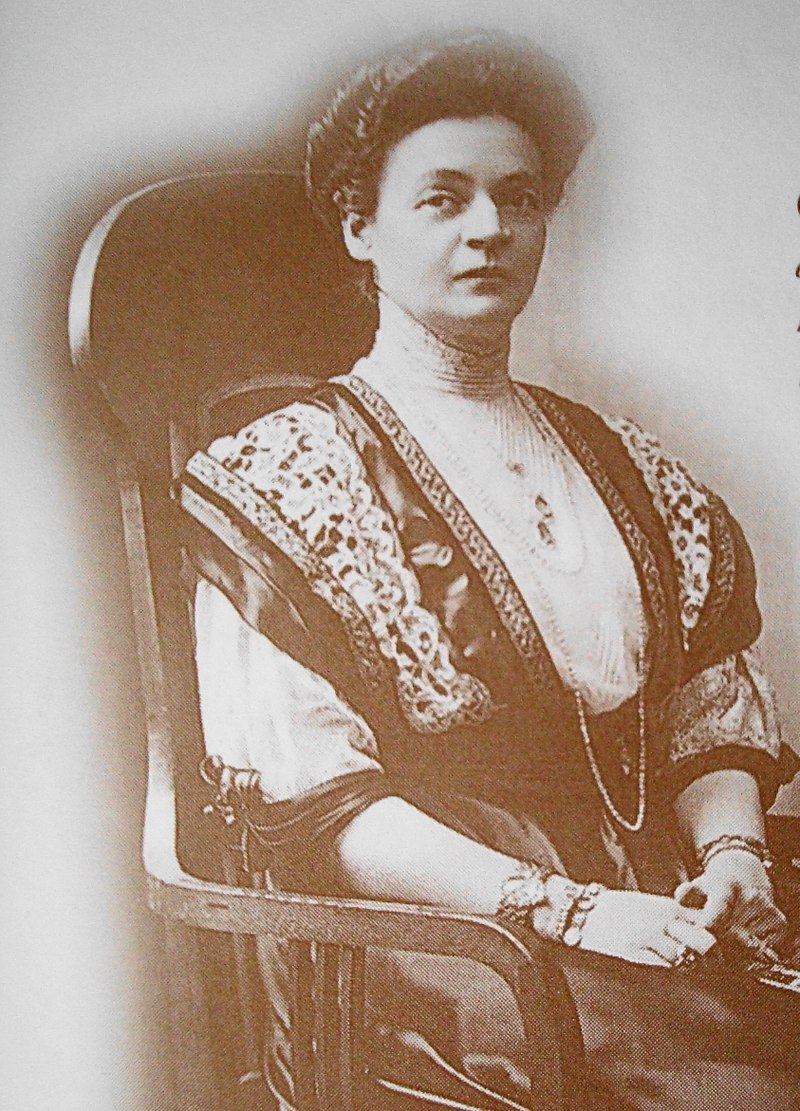by Scott Mehl © Unofficial Royalty 2016

Eleonore Reuss of Köstritz, Tsaritsa of Bulgaria source: Wikipedia
Princess Eleonore Reuss of Köstritz (Eleonore Caroline Gasparine Louise) was the second wife of Tsar Ferdinand I of Bulgaria (born Prince Ferdinand of Saxe-Coburg-Gotha-Koháry). She was born on August 22, 1860, in Trebschen, a village in the Province of Brandenburg, now part of Poland, to Prince Heinrich IV Reuss of Köstritz and Princess Luise Caroline Reuss of Greiz.
Eleonore had three siblings:
- Prince Heinrich XXIV Reuss of Köstritz (1855 – 1910), married his cousin Princess Elisabeth Reuss of Köstritz, had five children
- Helene Reuss of Köstritz (1864 – 1876)
- ElisabethReuss of Köstritz (1865 – 1937)
From an early age, Eleonore was involved in helping others. In 1905, she traveled to the Far East to work as a nurse during the Russo-Japanese War. Two years later, following a bit of match-making by Grand Duchess Maria Pavlovna of Russia, Eleonore became engaged to Ferdinand of Bulgaria in December 1907. Ferdinand’s first wife, Princess Maria Luisa of Bourbon-Parma, died on January 31, 1899, after the birth of the youngest of their four children.

source: Wikipedia
Following extensive negotiations, due primarily to their different religions, Eleonore and Ferdinand were married in a Catholic ceremony at St. Augustine’s Church in Coburg, Duchy of Saxe-Coburg and Gotha, now in the German state of Bavaria, on February 28, 1908. The following day, a Protestant ceremony was held at Schloss Osterstein in Gera, Principality of Reuss-Gera, now in the German state of Thuringia. At the time, Ferdinand was the reigning Prince (Knyaz) and Eleonore became Princess of Bulgaria. Later that year, Eleonore would become the first Tsaritsa of Bulgaria after Ferdinand declared the country a kingdom.
Eleonore and Ferdinand did not have any children however, Eleonore was instrumental in raising her four stepchildren:
- Tsar Boris III (1894 – 1943) – married Princess Giovanna of Italy, had issue
- Prince Kyril (1895 – 1945) – unmarried, executed in 1945
- Princess Eudoxia (1898 – 1985) – unmarried
- Princess Nadezhda (1899 – 1958) – married Duke Albrecht Eugen of Württemberg, had issue
With very little attention or affection from her husband, Eleonore focused on the welfare of the Bulgarian people. She quickly became involved with the Bulgarian Red Cross, and later set up the Queen Eleonore Fund in 1910 to raise funds to build institutes for children who were blind and deaf. She also founded an orphanage for Jewish children, which still exists today as The Queen Eleonore Orphanage.
Eleonore also took a great interest in the medieval Boyana Church, on the outskirts of Sofia, Bulgaria. The small church dating as far back as the 10th century was too small to accommodate the needs of the village and it was planned to tear it down and build a new church. However, Eleonore dreaded the loss of such a historic building, and purchased a plot of land for a new church, allowing the original building to remain and be restored.

Eleonore as a nurse with the Red Cross during the Balkan Wars. source: Wikipedia
During the Balkan Wars and World War I, Eleonore worked tirelessly as a nurse on the front lines. Sadly, after a serious illness, the Tsaritsa died on September 12, 1917, at Euxinograd Palace. near Varna, Bulgaria. Per her wishes, she was buried in a very modest grave next to the medieval Boyana Church she had helped save.

Grave of Tsaritsa Eleonore. source: Wikipedia, photo by Elena Chochkova
This article is the intellectual property of Unofficial Royalty and is NOT TO BE COPIED, EDITED, OR POSTED IN ANY FORM ON ANOTHER WEBSITE under any circumstances. It is permissible to use a link that directs to Unofficial Royalty.
Bulgaria Resources at Unofficial Royalty









